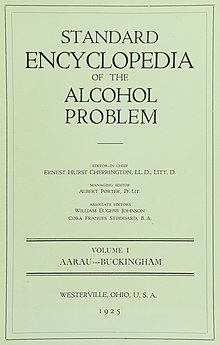
The temperance movement is a social movement promoting temperance or complete abstinence from consumption of alcoholic beverages. Participants in the movement typically criticize alcohol intoxication or promote teetotalism, and its leaders emphasize alcohol's negative effects on people's health, personalities and family lives. Typically the movement promotes alcohol education and it also demands the passage of new laws against the sale of alcohol, either regulations on the availability of alcohol, or the complete prohibition of it. During the 19th and early 20th centuries, the temperance movement became prominent in many countries, particularly in English-speaking, Scandinavian, and majority Protestant ones, and it eventually led to national prohibitions in Canada, Norway, Finland, and the United States, as well as provincial prohibition in India. A number of temperance organizations exist that promote temperance and teetotalism as a virtue.
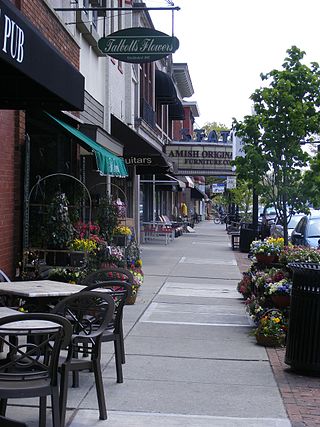
Westerville is a city in Franklin and Delaware counties in the U.S. state of Ohio. A northeastern suburb of Columbus as well as the home of Otterbein University, the population was 39,190 at the 2020 census.

The Anti-Saloon League, now known the American Council on Addiction and Alcohol Problems, is an organization of the temperance movement.
A local option is the ability of local political jurisdictions, typically counties or municipalities, to allow decisions on certain controversial issues within their borders, usually referring to a popular vote. It usually relates to the issue of alcoholic beverage, marijuana sales, and now mask wearing.

Ernest Hurst Cherrington was a leading temperance journalist. He became active in the Anti-Saloon League and was appointed editor of the organization's publishing house, the American Issue Publishing Company. He edited and contributed to the writing of The Standard Encyclopedia of the Alcohol Problem, a comprehensive six-volume work. In addition, he was active in establishing the World League Against Alcoholism.

Howard Hyde Russell was an American lawyer and clergyman, the founder of the Anti-Saloon League.

The World League Against Alcoholism was organized by the Anti-Saloon League, whose goal became establishing prohibition not only in the United States but throughout the entire world.

Southern Idaho is a generic geographical term roughly analogous with the areas of the U.S. state of Idaho located in the Mountain Time Zone. It particularly refers to the combined areas of the Boise metropolitan area, the Magic Valley and Eastern Idaho.
The Westerville Public Library is a public library that serves the community of Westerville, Ohio, a suburb of Columbus, Ohio. As a school district library, its geographic boundaries are defined by the Westerville City School District which is located in both Franklin County and Delaware County. All Ohio residents can apply for a Westerville Public Library card.

Wayne Bidwell Wheeler was an American attorney and longtime leader of the Anti-Saloon League. The leading advocate of the prohibitionist movement in the late 1800s and early 1900s, he played a major role in the passage of the Eighteenth Amendment to the United States Constitution, which outlawed the manufacture, distribution, and sale of alcoholic beverages.

The Prohibition era was a period in the United States from 1920 to 1933 during which a nationwide constitutional law prohibiting the production, importation, transportation, and sale of alcoholic beverages was enacted. The alcohol industry was curtailed by a succession of state legislatures, and finally ended nationwide under the Eighteenth Amendment to the United States Constitution, ratified on January 16, 1919. Prohibition ended with the ratification of the Twenty-first Amendment, which repealed the Eighteenth Amendment on December 5, 1933.

In the United States, the temperance movement, which sought to curb the consumption of alcohol, had a large influence on American politics and American society in the nineteenth and twentieth centuries, culminating in the prohibition of alcohol, through the Eighteenth Amendment to the United States Constitution, from 1920 to 1933. Today, there are organizations that continue to promote the cause of temperance.
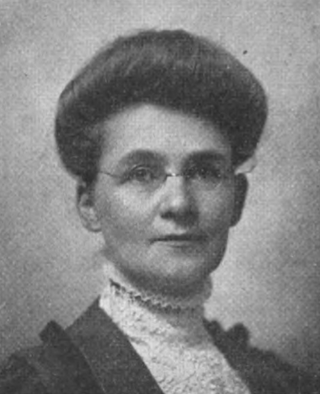
Martha Meir Allen was a Canadian temperance activist and writer.
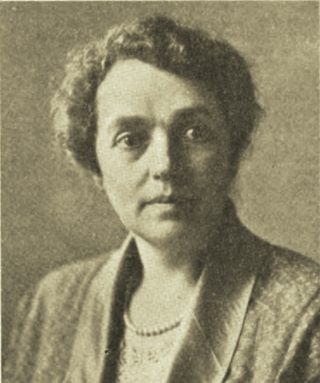
Suessa Baldridge Blaine was an American writer of temperance pageants. She was connected with the Federated Woman's Clubs and organizations.

Jessie Forsyth was a British-American temperance advocate. She joined the International Organisation of Good Templars (IOGT) in London in 1872, relocated to New England for decades, and celebrated her Jubilee while residing in Western Australia. During her 50 years membership, Forsyth filled many important offices, including 15 years as International Superintendent of Juvenile Templars, in the course of which she visited jurisdictions in Great Britain, the United States and Canada and many parts of continental Europe. She edited the International Good Templar Magazine for eight years and, at different times, did the editorial work on seven other temperance publications, in addition to being a contributor of short stories and poems to newspapers and magazines. She made addresses in various countries before large audiences, including one in the Royal Opera House, Stockholm, and did much secretarial work. The last years of her life were chiefly devoted to work for the WCTU until she was compelled to resign active service on account of ill health.

Christina Marshall Colville was a Scottish temperance leader. She served as president of the British Women’s Temperance Association (BWTA).
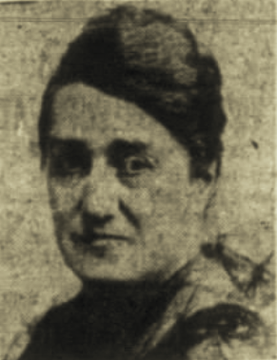
Mamie Claflin was an American temperance and woman suffrage leader. In addition to serving six years as president of the Nebraska Woman's Christian Temperance Union (W.C.T.U.) (1912–18), for 16 years, she was also the editor and publisher of its organ, The Union Worker.
Ella D. Crawford was an American temperance movement community organizer affiliated with the Woman's Christian Temperance Union (W.C.T.U.). She served as president of various county, district, and local Unions in Minnesota and Iowa before being elected president of the South Idaho W.C.T.U.

Lella A. Dillard was an American temperance leader. She served as president of the Georgia State Woman's Christian Temperance Union (W.C.T.U.), and afterwards as National Director of the W.C.T.U.'s Peace Department.

Fillmore Condit was an American inventor, temperance activist and local politician serving New Jersey and later Long Beach, California.
